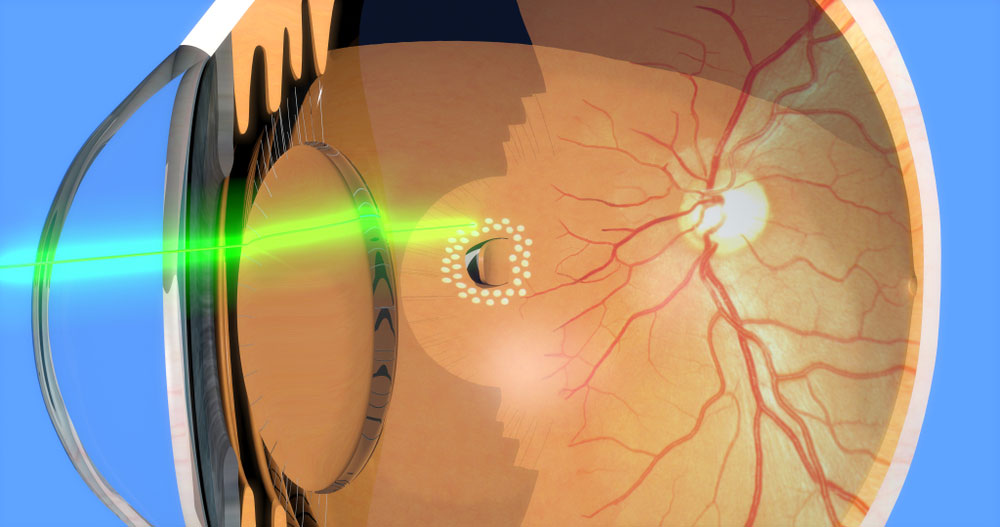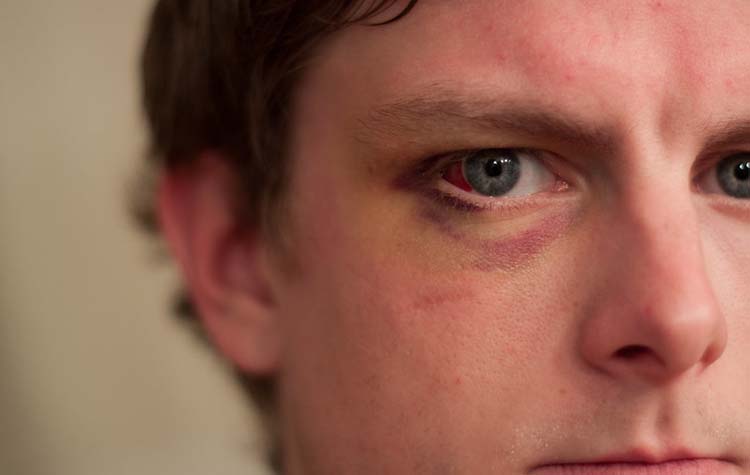

EYE TORN RETINA SYMPTOMS PROFESSIONAL
Anyone experiencing the symptoms of a retinal detachment should see an eye care professional immediately. A retinal detachment is a medical emergency. Another symptom is the appearance of a curtain over the field of vision. Symptoms include a sudden or gradual increase in either the number of floaters, which are little “cobwebs” or specks that float about in your field of vision, and/or light flashes in the eye. Have other eye diseases or disorders, such as retinoschisis, uveitis, degenerative myopia, or lattice degeneration.Have a family history of retinal detachment.Have had a retinal detachment in the other eye.

A retinal detachment is also more likely to occur in people who: It affects men more than women, and Whites more than African Americans. Causes and Risk FactorsĪ retinal detachment can occur at any age, but it is more common in people over age 40. In this type, fluid leaks into the area underneath the retina, but there are no tears or breaks in the retina. This type of detachment is less common.Įxudative - Frequently caused by retinal diseases, including inflammatory disorders and injury/trauma to the eye. Tractional - In this type of detachment, scar tissue on the retina’s surface contracts and causes the retina to separate from the RPE. These types of retinal detachments are the most common. Rhegmatogenous - A tear or break in the retina allows fluid to get under the retina and separate it from the retinal pigment epithelium (RPE), the pigmented cell layer that nourishes the retina. These areas, called retinal tears or retinal breaks, can lead to retinal detachment. In some cases there may be small areas of the retina that are torn. If not treated promptly, retinal detachment can cause permanent vision loss. When the retina detaches, it is lifted or pulled from its normal position. At Florida Eye Specialists and Cataract Institute, our treatments for a retinal tear are very effective in relieving symptoms and preventing retinal detachment.The retina is the light-sensitive layer of tissue that lines the inside of the eye and sends visual messages through the optic nerve to the brain. Retinal tears are successfully treated with lasers to seal the retina to the tissue underneath. If you experience any of these symptoms, you should schedule a retinal examination immediately.Įarly detection and prompt treatment of a retinal tear can often prevent the retina from detaching. Although a retinal tear does not cause pain, it can cause flashes or floaters in the field of vision, a reduction of vision, a shadow or curtain forming in side vision, or other vision changes. Retinal tears may occur in patients with nearsightedness (myopia), as it can cause the vitreous to pull away from the retina. These include the latest advances in cryotherapy, photocoagulation and pneumatic retinopexy, as well as other procedures. Retinal detachment is a medical emergency because it can lead to permanent blindness.Īt Florida Eye Specialists and Cataract Institute, we treat retinal detachment in several ways. If you experience central vision loss, progression of a dense shadow throughout the visual field or an unnatural curving of straight lines, especially as the result of a head trauma, we recommend that go to an emergency room as quickly as possible. Retinal detachment can also be a complication of cataract surgery. A sudden decrease in vision, large increases in the amount of “floaters” in vision, or the manifestation of bright flashes in your side vision are cues to schedule an appointment with one of our specialists at our office as soon as possible. In most cases, retinal detachment is a slowly progressing issue and needs be treated once the symptoms are discovered. This leaves the retina unprotected, allowing fluid to travel between the retina and the wall causing retinal detachment. A change in its shape can cause it to pull away from the retina producing a tear. The vitreous can becomes thinner and waterier as we age. Your retina is attached to a gel-like substance called the vitreous which makes up for most of the eye’s volume.


 0 kommentar(er)
0 kommentar(er)
